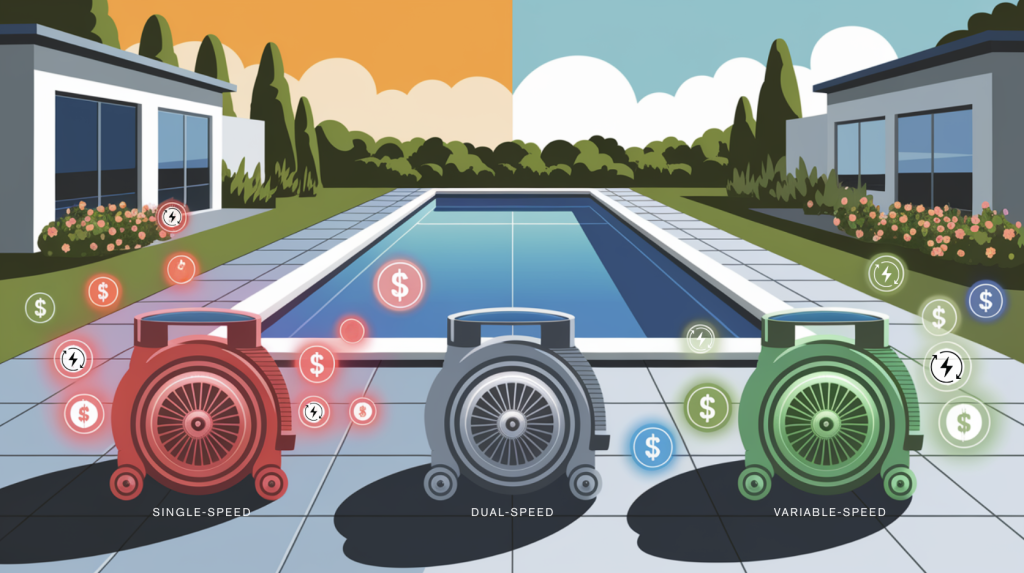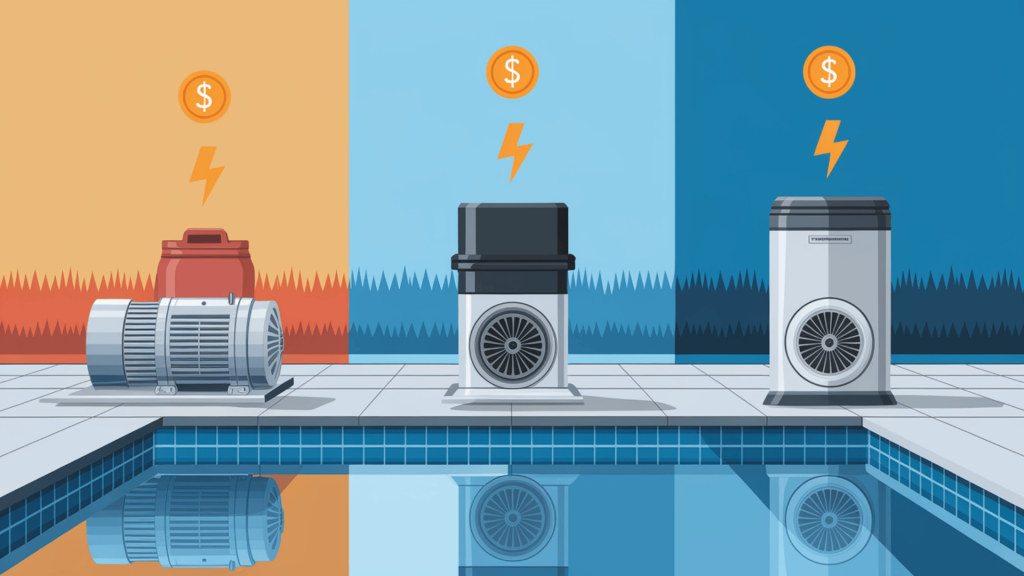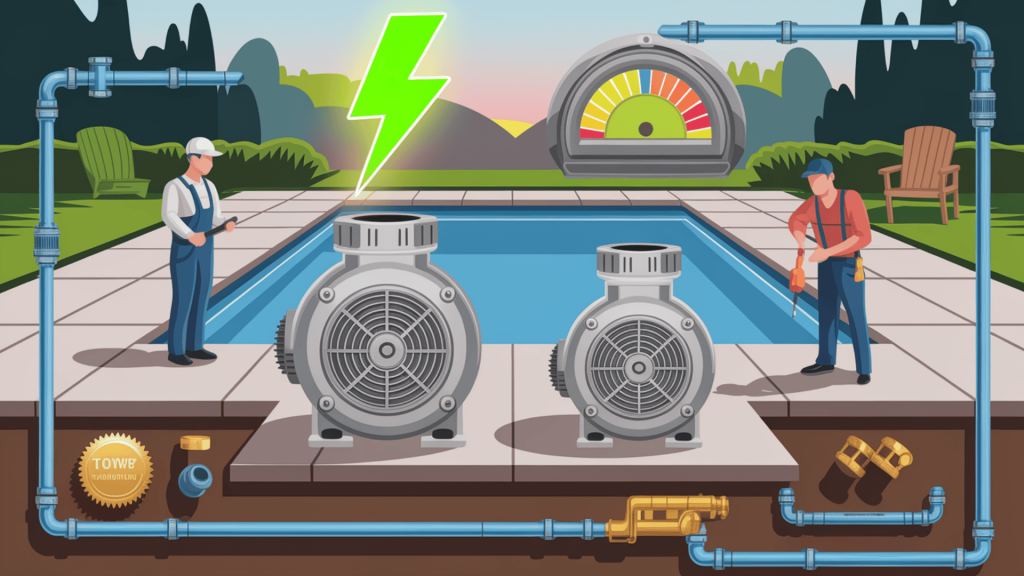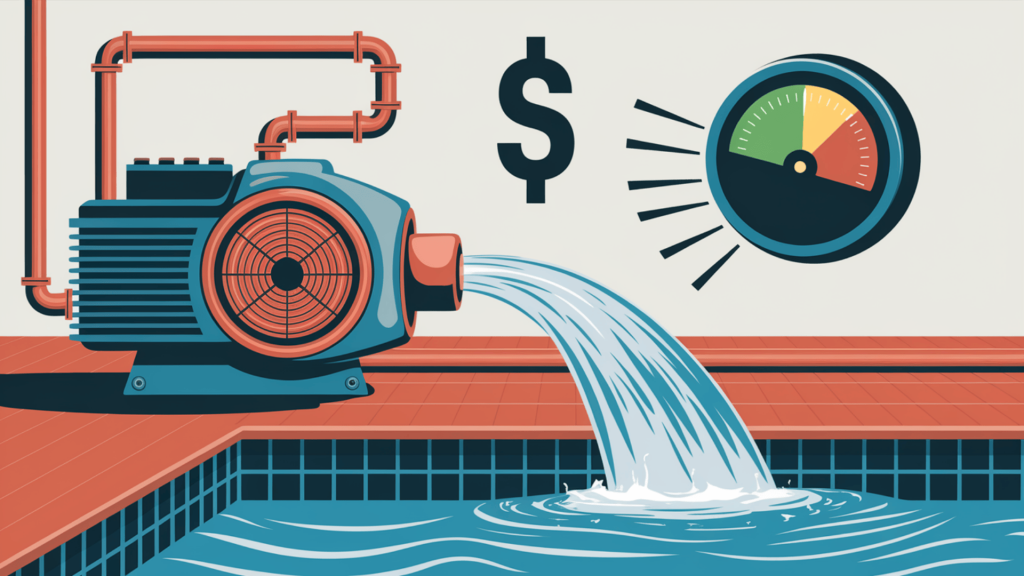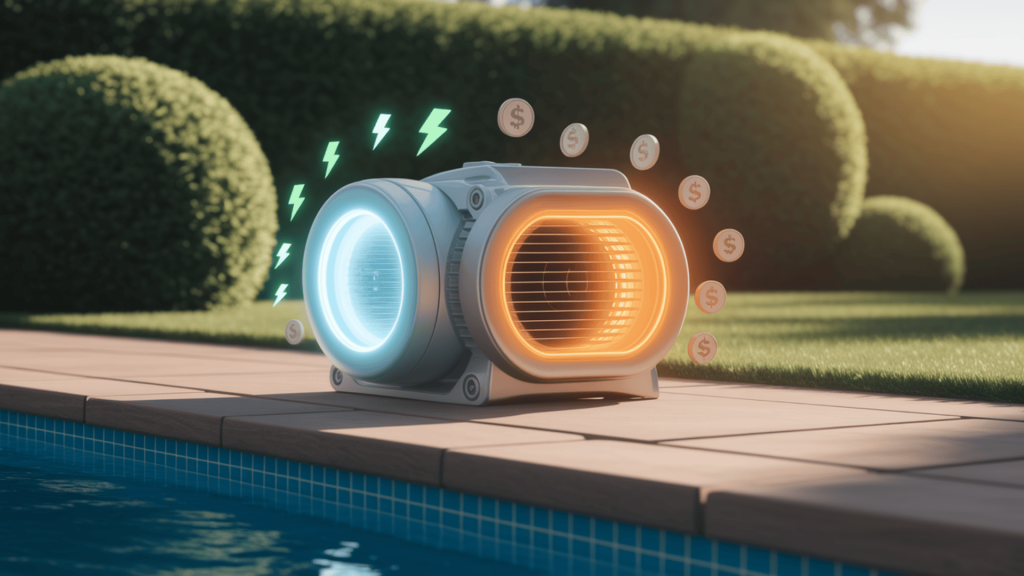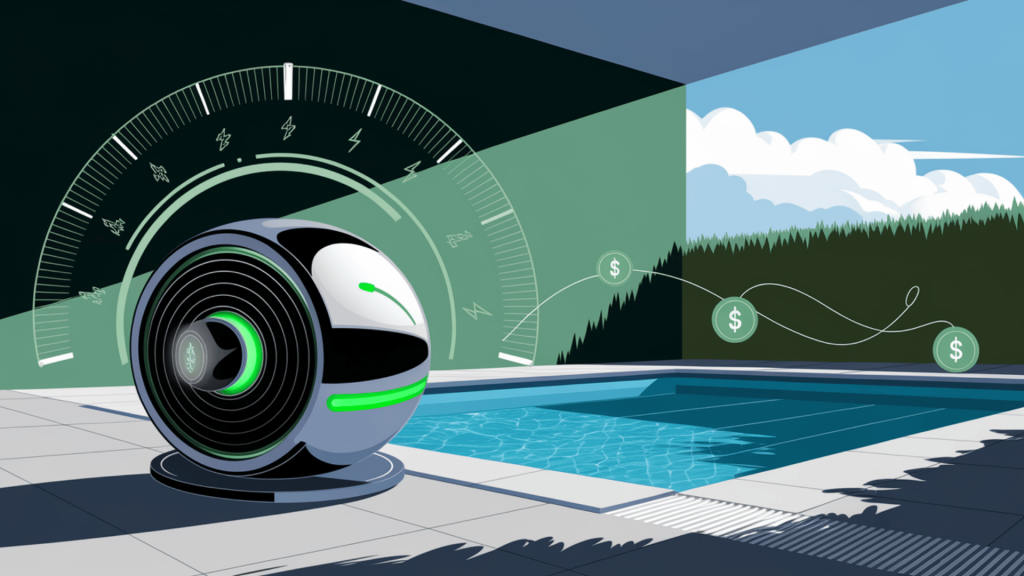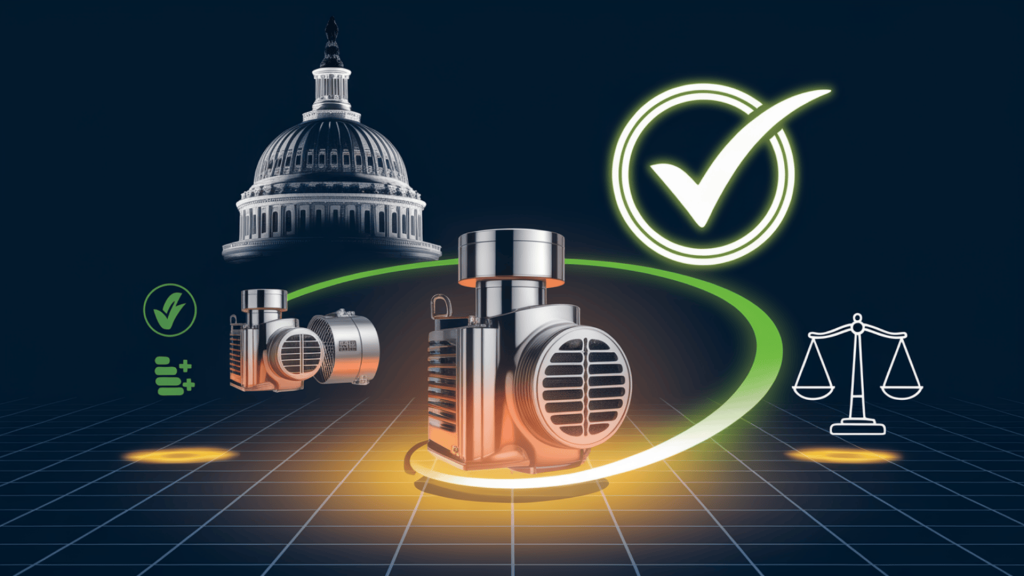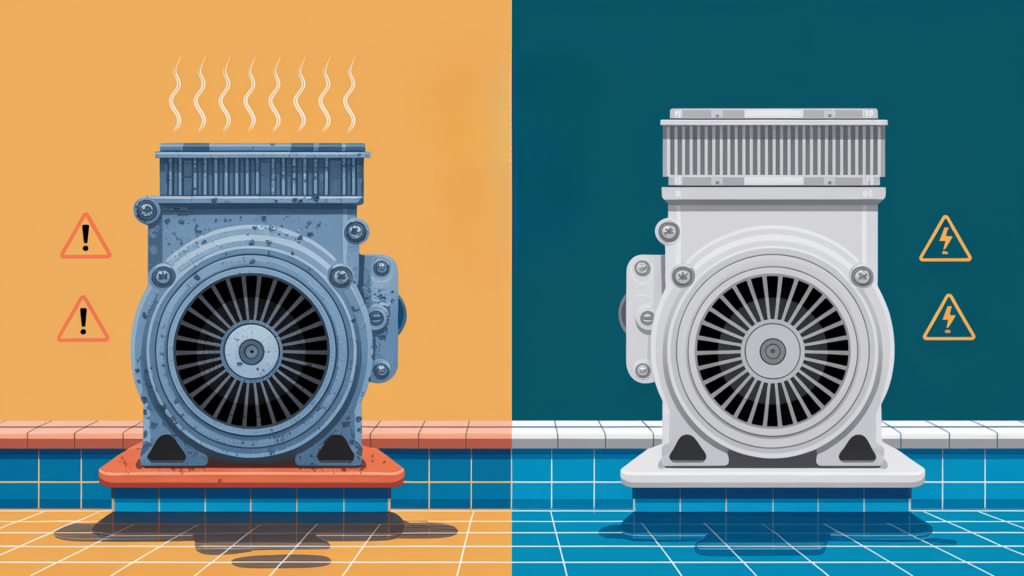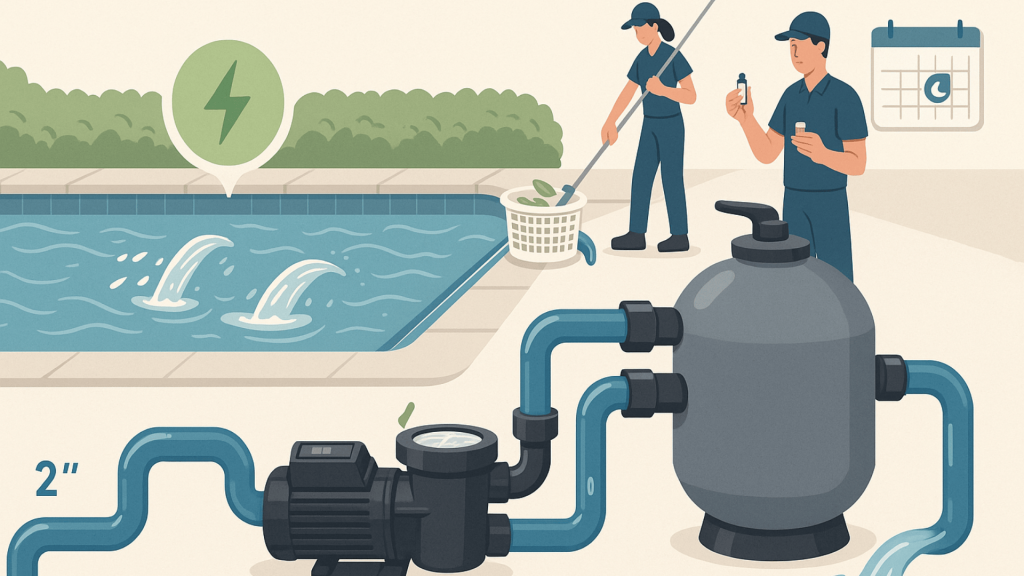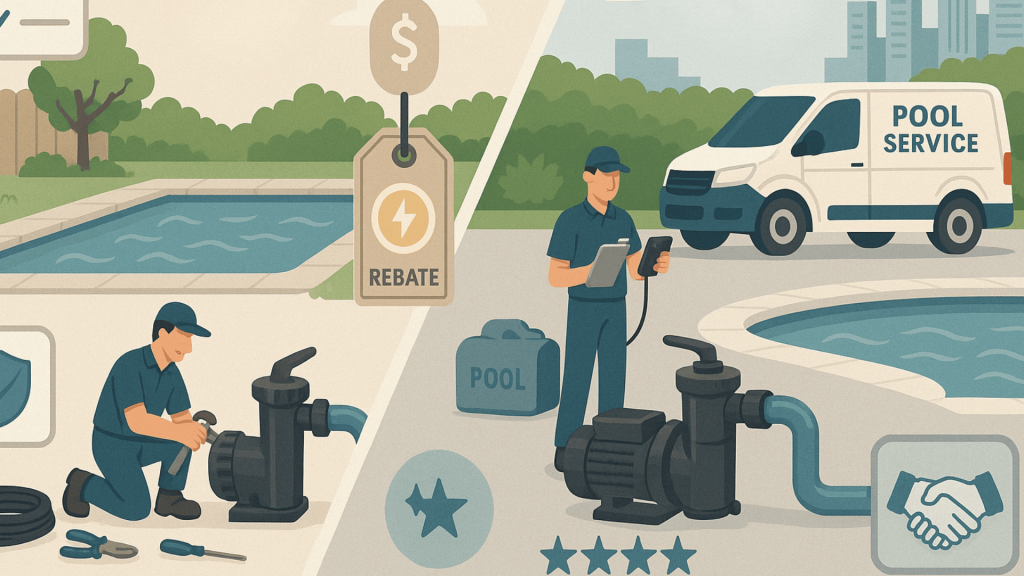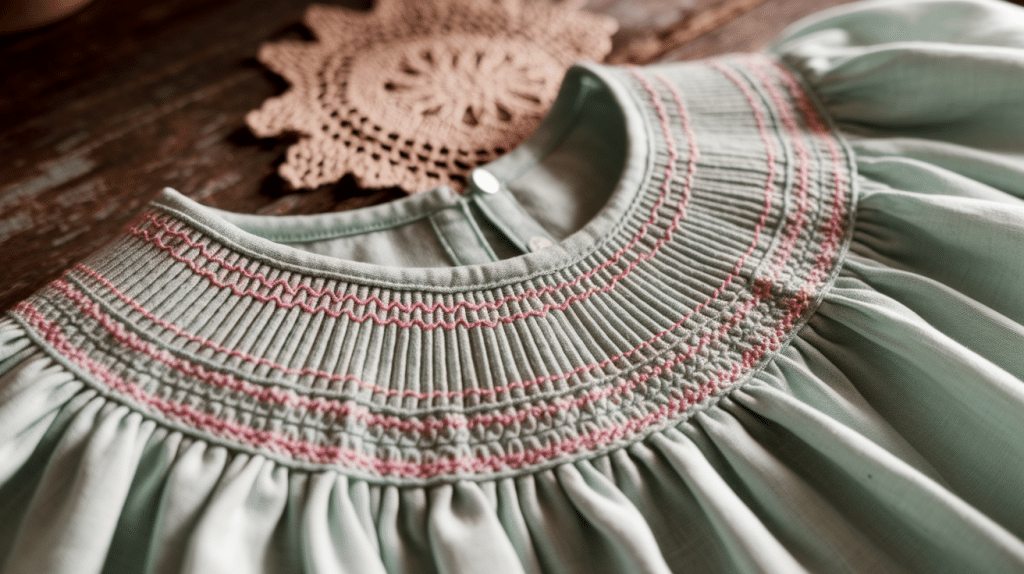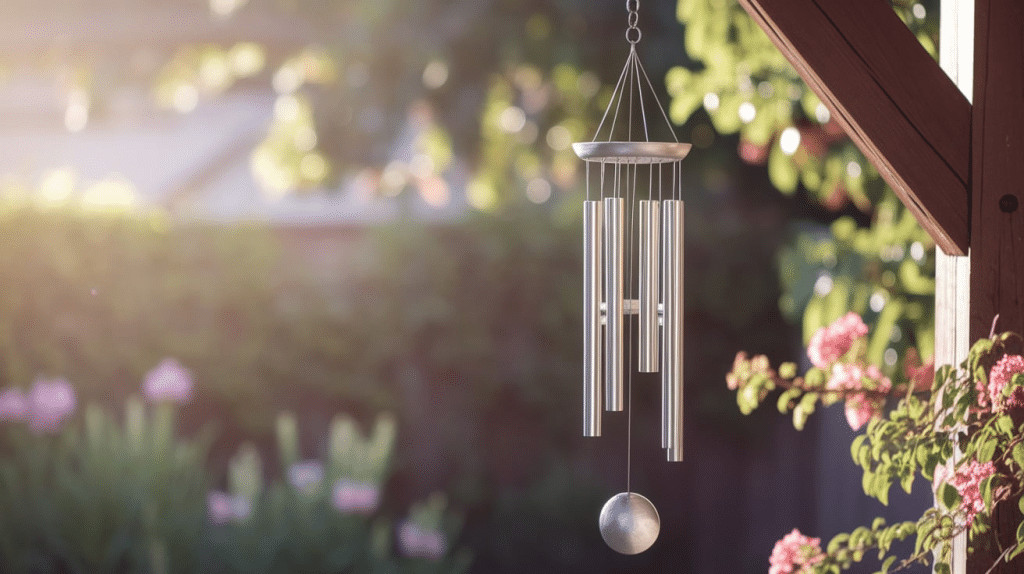Ready to dive into pool ownership?
Understanding pool pump costs is crucial before making the plunge.
Pool pumps—the heart of your swimming pool system—keep water clean and safe while impacting your monthly bills.
Most homeowners spend $200-$1,500 on the unit alone, plus installation costs ranging from $150-$1,500, depending on who handles the work.
But the real story isn’t just about upfront prices.
The type of pump you choose affects your wallet for years to come through energy costs.
A smart purchase today can save you thousands over the lifetime of your pool.
Let’s find out what drives these costs and how to make the smartest choice for your backyard oasis.
How Much Does a Pool Pump Cost?
Wondering what a new pool pump might cost you? The answer isn’t as simple as you might think.
Pool pump prices typically range from $200 to $1,500 for the unit alone.
Single-speed pumps cost the least ($200-$600), while variable-speed models command higher prices ($500-$1,400) but offer significant long-term savings on energy bills.
Don’t forget about installation!
Doing it yourself could save you hundreds, with DIY costs running $150-$800 for parts and tools.
Professional installation runs $500-$1,500 but comes with the peace of mind that everything’s set up correctly.
The right pump can make all the difference in your pool ownership experience, affecting everything from water clarity to your monthly electric bill.
Monthly & Yearly Costs of Running a Pool Pump
Your pool pump’s impact on your wallet doesn’t end with purchase and installation.
The ongoing electricity costs can add up quickly, depending on which type you choose.
Single-speed pumps might seem like a bargain initially, but they can cost between $75 and $150 monthly to run.
Over a year, that’s up to $1,800 just to keep your pool water moving!
1. Smart Money-Saving Options
Dual-speed pumps offer better efficiency, typically costing $30 to $50 per month to operate.
But the real winners are variable-speed models, which only cost $20 to $40 monthly—less than a third of what you’d pay with a single-speed pump.
The initial investment pays off quickly through energy savings, often within the first 1-2 years of ownership.
Many pool owners report saving $300-$500 annually after switching from a single-speed to a variable-speed pump.
2. Seasonal Cost Variations
Summer months naturally bring higher operating costs as pumps typically run longer to combat algae growth in warmer temperatures.
Many pool owners see their electricity bills spike by $50-$100 during peak swimming season.
Winter operation, even in warmer climates, generally costs less as reduced sunlight and cooler temperatures slow algae growth.
Most pools can maintain proper circulation with just 4-6 hours of pump time daily during colder months compared to 8-12 hours in summer.
3. Calculating Your Costs
Your actual costs will vary based on several factors.
A larger pump with higher horsepower will naturally use more electricity. Your pool size matters too—more water means more work for your pump.
To estimate your costs, multiply your pump’s horsepower by 1.5 to get the kilowatt-hours used per hour of operation. Then multiply by your local electricity rate and daily run time.
4. Lifetime Operating Expenses
When making purchasing decisions, consider the total cost of ownership, not just the initial price tag:
| PUMP TYPE | MONTHLY COST | ANNUAL COST | TYPICAL LIFESPAN |
|---|---|---|---|
| Single-speed | $75-$150 | $900-$1,800 | 3-8 years |
| Dual-speed | $30-$50 | $360-$600 | 5-8 years |
| Variable-speed | $20-$40 | $240-$480 | 8-12 years |
These numbers clearly show that while variable-speed pumps cost more upfront, they often pay for themselves within 2-3 years through energy savings alone.
Key Factors That Influence Pool Pump Costs
When shopping for a pool pump, the price tag only tells part of the story.
Several important factors will determine both your upfront and long-term costs.
Consider these critical elements before making your purchase:
- Pump Size and Horsepower Needs – Match to your specific pool volume and plumbing setup
- Energy Efficiency Ratings – Look for Energy Star certification when possible
- Compatibility with Existing Equipment – Some systems may need additional parts for proper installation
- Local Electricity Rates – Areas with higher rates benefit more from efficiency upgrades
- Professional vs. DIY Installation – Labor costs vary widely by location and complexity
- Warranty Coverage – Better warranties often come with higher-quality equipment
Choosing a pump that’s properly sized for your pool is especially important.
An oversized pump wastes electricity and puts stress on your filtration system, while an undersized one won’t clean effectively.
Choosing the Right Pool Pump Type
Finding the perfect pump involves balancing upfront costs against long-term savings and performance.
The right choice depends on your budget, pool size, and local energy costs.
1. Single-Speed Pumps
Single-speed pumps operate at full power whenever they’re running.
While they’re the least expensive option initially ($200-$600), they cost the most to operate and are being phased out due to efficiency regulations.
These pumps run at a constant 3,450 RPM, which is often much faster than needed for basic water circulation.
This inefficiency leads to higher energy consumption and increased wear on your filtration system.
2. Dual-Speed Technology
Dual-speed pumps offer a middle ground, with a high setting for heavy cleaning and a lower, more efficient setting for daily circulation.
These typically last 5-8 years and provide moderate energy savings.
Many pool owners find dual-speed pumps a good compromise when budget constraints make variable-speed models unattainable.
The lower speed setting uses approximately half the energy of the high speed.
3. Variable-Speed Benefits
Variable-speed pumps represent the gold standard in pool equipment today.
They can run at precisely the speed needed for different tasks, dramatically reducing energy use.
Though more expensive initially, most owners recoup the difference through lower electric bills within 1-2 years.
These pumps use permanent magnet motors similar to those in electric cars, allowing them to operate efficiently at speeds as low as 600 RPM.
4. Regulatory Considerations
Since 2021, federal regulations require most new pumps to meet strict efficiency standards, effectively making variable-speed technology the norm for new installations.
These regulations aim to reduce energy consumption nationwide, with estimates suggesting pool owners will save billions in electricity costs over the coming decade.
When Should You Repair or Replace a Pool Pump?
Even the best pool pumps eventually show signs of wear.
Knowing when to repair versus replace can save you money and hassle.
Watch for these warning signs that your pump might be failing:
- Unusual noises (grinding, rumbling, or screeching)
- Water leaks around the pump housing
- Air bubbles in the return jets when the system is running
- The motor feels hot to the touch during operation
- The circuit breaker trips frequently when the pump is running
- The pump takes longer than normal to prime
- Decreased water flow despite clean filters and baskets
When your pump stops working properly, you have options.
Replacing just the motor can cost between $25 and $200 for parts if you’re handy, or $65 to $300 if you hire a professional.
Thumb rule?
If repair costs exceed 75% of a new pump’s price, replacement is usually the smarter choice.
Also consider the pump’s age—most units last 8-12 years, so major repairs on older pumps rarely make financial sense.
Long-Term Savings: How to Reduce Pool Pump Operating Costs
Smart pool owners know that the right equipment choices and maintenance habits can dramatically cut operating costs.
Upgrading to a variable-speed pump offers the biggest potential savings, often reducing electricity use by 70-80% compared to older single-speed models.
While the upfront cost is higher, the monthly savings add up quickly.
System Optimization
Your filtration system plays a key role, too.
Installing larger filters reduces pressure in the system, allowing your pump to work less hard.
Similarly, switching to 2-inch plumbing (from the standard 1.5-inch) decreases water resistance, improving efficiency.
Maintenance Matters
Proper pool chemistry helps, as well.
Well-balanced water requires less filtration time because it resists algae growth better.
Consider running your pump during off-peak hours when electricity rates may be lower.
Regular maintenance prevents problems that force your pump to work harder.
Clean filters, skimmer baskets, and pump strainers regularly to keep water flowing smoothly through your system.
Pool Pump Costs by Installation & Service Location
Your location significantly affects what you’ll pay for pool pump installation and operation.
Regions with higher costs of living typically have higher labor rates for installation services.
A pool pump installation that costs $500 in rural areas might run $800 or more in major metropolitan areas.
To find the best service at fair prices, follow these tips:
- Get at least three written quotes from different companies
- Check for proper licensing and insurance
- Read online reviews, focusing on recent comments
- Ask about warranty coverage for both parts and labor
- Request references from previous customers
- Verify they have experience with your specific pump model
- Get a detailed breakdown of all costs in writing
Many utility companies offer rebates for installing energy-efficient pool equipment.
These incentives can range from $50 to $500, significantly offsetting the higher cost of premium variable-speed pumps.
Check with your local utility before purchasing to ensure you qualify for any available programs.
Final Thoughts
Pool pump costs go far beyond the price tag at checkout.
The right pump balances upfront cost with long-term energy savings, proper sizing, and quality.
Variable-speed models offer the best value over time, often paying for themselves within two years through dramatically lower electric bills.
Remember to consider local rebates and incentives that can offset initial costs.
Taking time to research your options now leads to years of trouble-free pool enjoyment with minimal ongoing expenses.
Your perfect pump is out there—one that keeps your water crystal clear without draining your bank account every month.
Perfect chemistry means perfect pool days—because life’s too short for cloudy water!
Have you battled high alkalinity in your pool?
Share your experiences and tips in the comments below!

